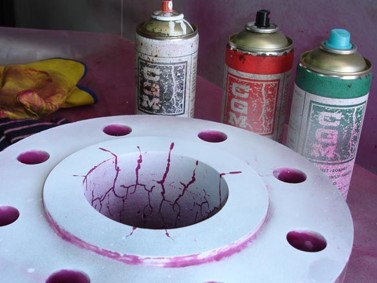What is the Dye Penetrant Crack Testing?
The Dye penetrant crack testing should be done based on the approved written procedure. The procedure outlines what type of test should be done respecting the material, expected discontinuity, lab testing or field testing.

2 Free CPD Hours Courses - Completely Free
Enroll, Watch the Video, Take the Test, Download Your Cert and Submit to the API . 2 free courses are availble each with 2 hours credit. (Total 4 hours) - 1) ASME V Articl II , 2) ASME V Article 6 & 7
A qualified ASNT level II performs the test. In a field test, (it means when the subjected component cannot be brought to the NDE lab) both visible dye penetration test and fluorescent dye penetration test can be performed by the solvent removable method or water washable method.
Dye Penetrant Crack Testing with Visible Technique
The technician cleans the surface by spraying the cleaner aerosol to the test object. Then he uses a clean rag or cloth to clean the sprayed location.
In next step, dye penetrant spray can (aerosol) is used and sprayed to the surface and covers and wets the surface. If there is crack, the penetrant enters and soaks there. After elapsing of dwell time, the excess penetrant is removed by a rag and surface cleaned. This action will not remove penetrant from the crack or other discontinuities.
After dye penetrant removed, the developer is used. The technician agitates the can and
then sprays on the surface. A thin layer of the white film covers the test
object. The trapped dye penetrant in the crack is bleed out by reverse capillary action and indicates the crack.
Dye Penetrant Crack Testing with Fluorescent Technique
A different set of spray cans are used for this test. The process is similar to visible technique, but the last section is a little bit different. The room should be darkened after application of the fluorescent developer. In a darkened room, the ultraviolet light is used and radiated on the test object. Similarly, the trapped penetrant bleeds out and will be visible under the ultraviolet light, and the crack will be illuminated. The fluorescent technique is more sensitive than visible technique.